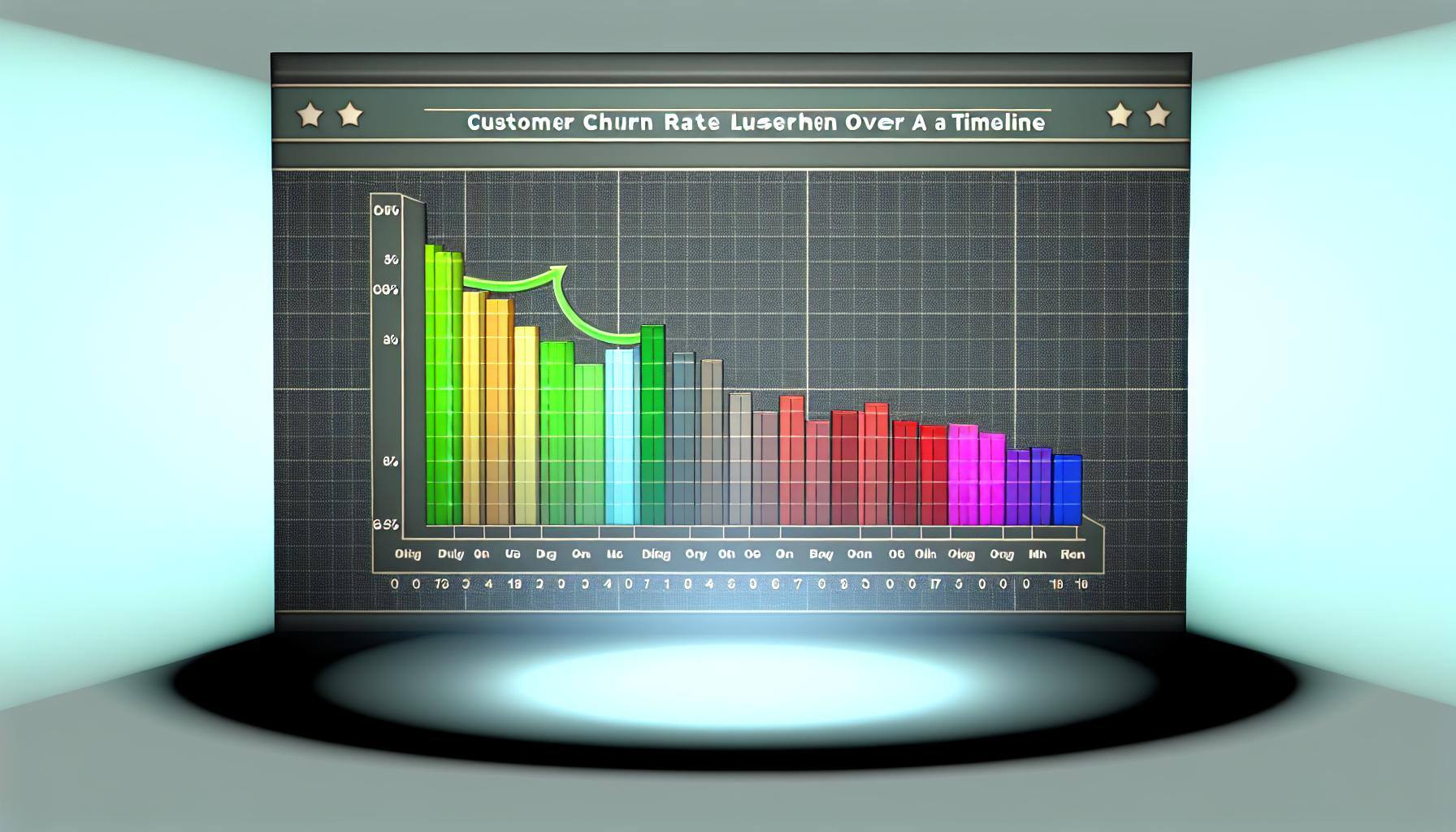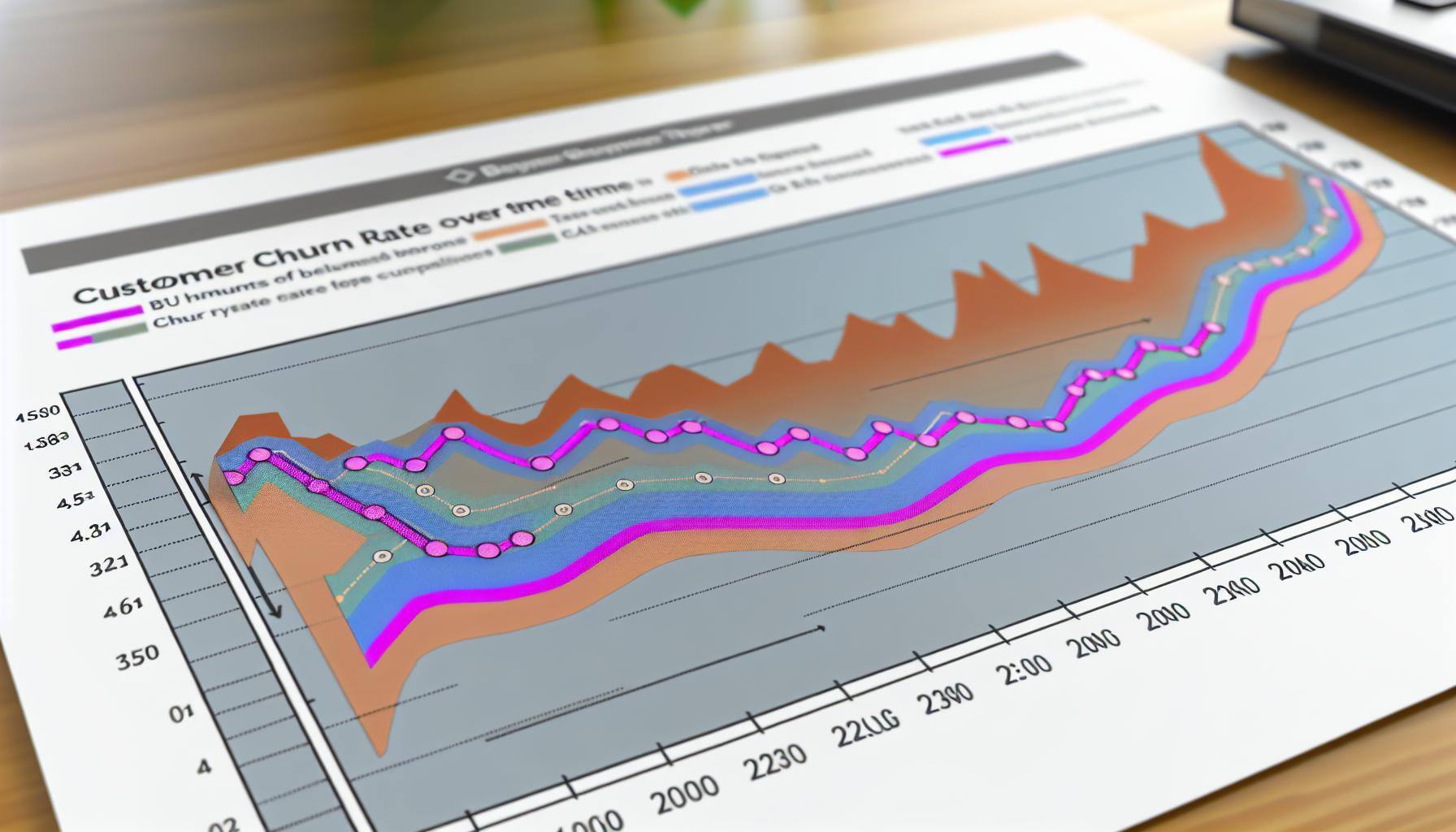B2B SaaS Churn Rate Benchmarks & Strategies for 2024 Success
In the competitive landscape of B2B SaaS, understanding and managing churn rate is pivotal for sustained success. Churn rate, often perceived as a...
2 min read
Brian Polackoff
:
Jul 17, 2024 12:53:00 PM

In the competitive landscape of Software as a Service (SaaS), understanding and minimizing customer churn is paramount for sustained growth and profitability. Churn, or the rate at which customers stop doing business with a company, directly impacts recurring revenue and long-term viability. Analytics plays a crucial role in predicting churn, allowing SaaS businesses to proactively address at-risk customers and refine their strategies for customer retention.
Churn in SaaS companies is particularly concerning because of the subscription-based business model. Unlike one-time purchases, SaaS companies rely on ongoing subscriptions and customer loyalty to generate revenue. This makes the stability of the customer base a critical metric for success.
Predicting churn allows SaaS companies to:
Analytics provides the data-driven insights necessary to predict churn. This involves collecting and analyzing various customer data points to identify patterns and indicators of potential churn. Key aspects include:
Data Collection: Gathering data from different sources such as user interactions, subscription levels, customer service engagements, and feature usage. This data forms the foundation of any effective churn analysis.
Customer Segmentation: Dividing the customer base into segments based on behavior, usage, and other attributes. This segmentation helps in identifying which groups are more likely to churn.
Predictive Modeling: Using statistical models and machine learning algorithms to predict which customers are at risk of churning. Common techniques include logistic regression, decision trees, and neural networks.
Metrics and Indicators: Identifying key metrics that are indicative of churn, such as decrease in usage, support ticket frequency, and changes in customer sentiment.
Feedback Loop: Integrating customer feedback to refine models and predictions continually. This iterative process helps in enhancing the accuracy of churn predictions.
Implementing an effective churn prediction system involves several steps:
Integrating Data Systems: Ensuring that all relevant customer data is accessible and integrated into a centralized system. This might involve software solutions for data aggregation and management.
Developing Predictive Models: Building or deploying analytical models tailored to the specific needs and data of the business. This typically requires data science expertise.
Monitoring and Reporting: Setting up dashboards and regular reporting mechanisms to monitor churn metrics and the health of the customer base.
Actionable Insights: Translating analytical insights into actionable strategies. This could involve targeted communications, personalized offers, or product changes designed to retain customers.
Several leading SaaS companies have successfully implemented analytics to predict and reduce churn:
Company A used advanced segmentation and predictive analytics to identify customers who were not using key features that correlated with long-term retention. By targeting these customers with specific onboarding sessions, they reduced churn by 15%.
Company B implemented machine learning models to predict churn based on user activity patterns. They identified critical touchpoints for intervention, which reduced churn by 20% year-over-year.
While predictive analytics can be extremely powerful, there are challenges:
The ability to predict churn using analytics offers SaaS companies a significant competitive advantage. It not only helps in retaining valuable customers but also enhances the strategic decision-making process, ensuring resources are used efficiently and customer needs are met proactively. As technology evolves, the sophistication of predictive tools will continue to grow, offering even more powerful insights into customer behavior and business health. For any SaaS company aiming for longevity and success, investing in analytics for churn prediction is not just beneficial; it is essential.

In the competitive landscape of B2B SaaS, understanding and managing churn rate is pivotal for sustained success. Churn rate, often perceived as a...

In today's competitive business landscape, understanding customer churn and developing strategies to reduce it are paramount to sustaining growth and...

Customer churn represents a critical challenge for B2B SaaS companies. Churn occurs when customers stop using a product or service, leading to lost...